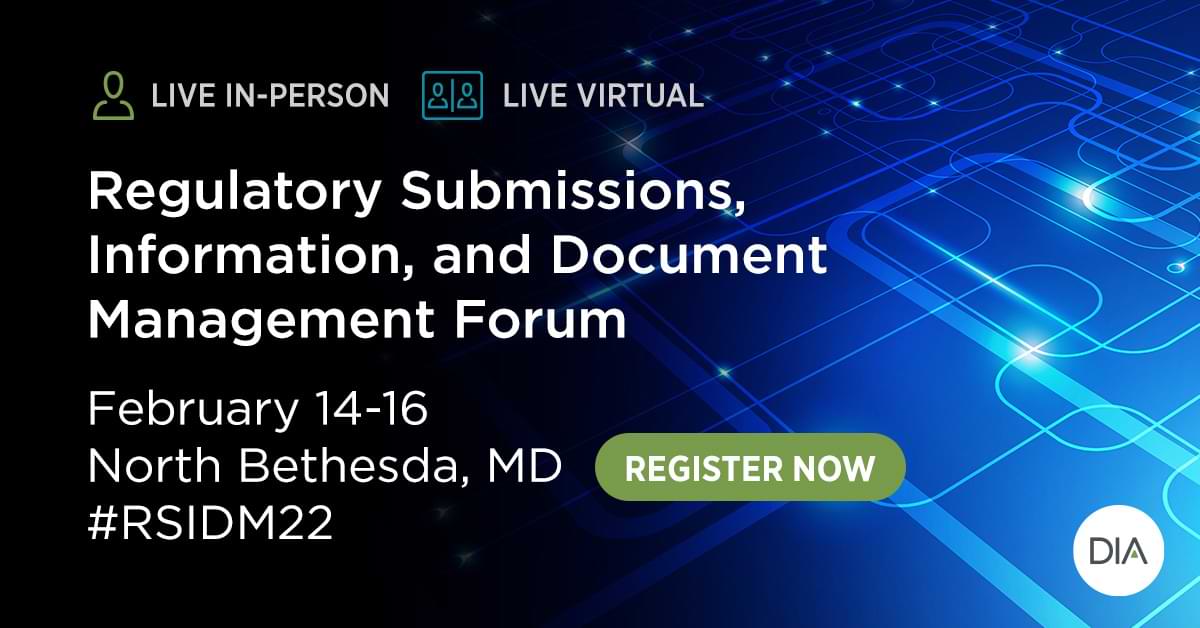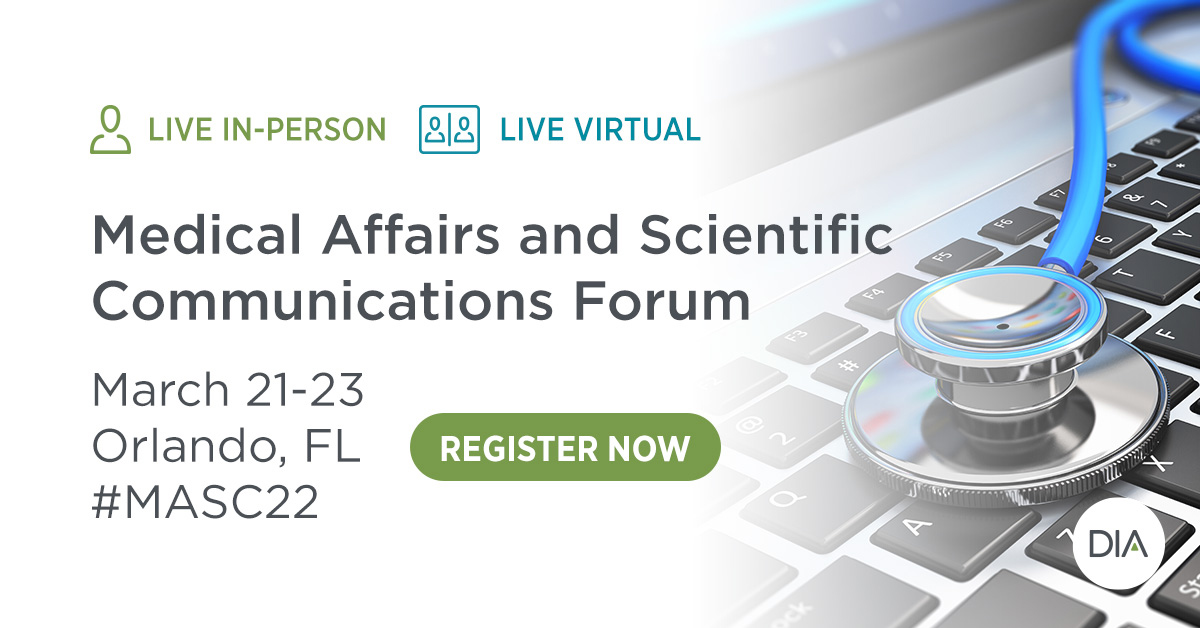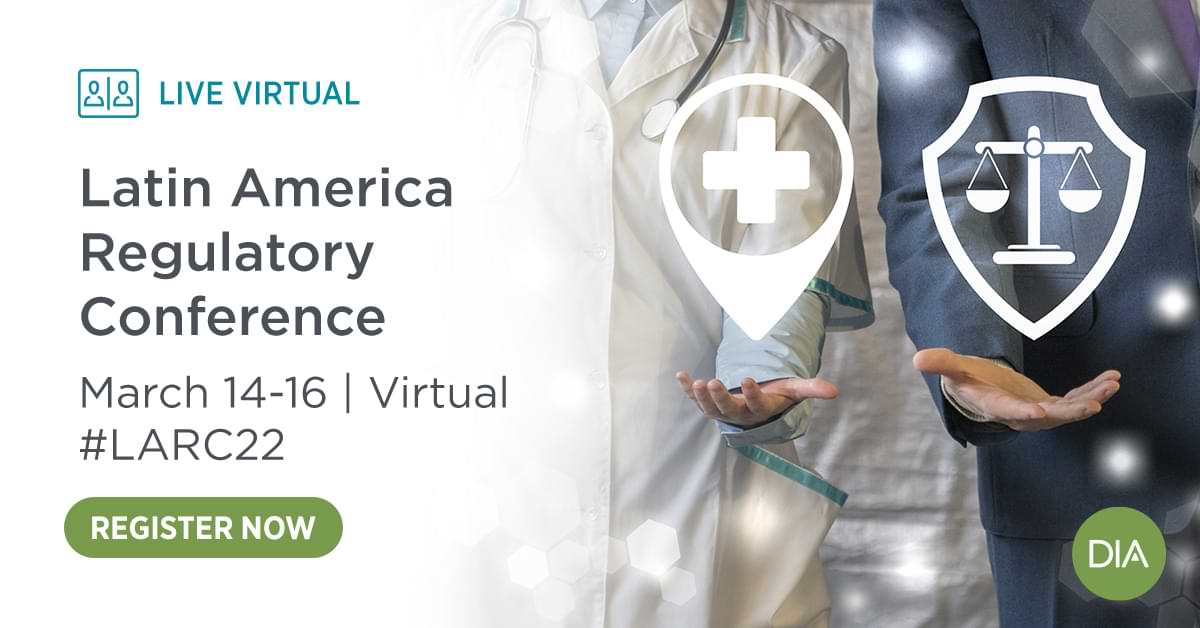Table of Contents
EXECUTIVE LEADERSHIP
Subscribe
Love Global Forum’s new online format? Subscribe today and never miss an issue.
Editorial Board
Content stream editors
Gary Kelloff US National Institutes of Health
David Parkinson ESSA Pharma, Inc.
regulatory science
Isaac Rodriguez-Chavez ICON plc
Patient engagement
Trishna Bharadia Patient Advocate and Media Contributor
Mary Stober Murray National Minority Quality Forum
Editorial Staff
Sandra Blumenrath, Managing Editor, Scientific Publications DIA Scientific Communications
Chris M. Slawecki, Senior Digital Copyeditor DIA Scientific Communications
Regional Editors
David Mukanga Bill and Melinda Gates Foundation
ASEAN
Jin Shun Sandoz
AUSTRALIA/NEW ZEALAND
Richard Day University of New South Wales, Medicine, St. Vincent’s Hospital
CANADA
Judith Glennie JL Glennie Consulting, Inc.
CHINA
Ling Su Shenyang Pharmaceutical University, Lilly Asia Ventures
Europe
Thomas Kühler Sanofi R&D
INDIA
J. Vijay Venkatraman Oviya MedSafe
JAPAN
Ozawa Goshi Real World Data Co. Ltd.
LATIN AMERICA
Cammilla Gomes Roche
USA
Ebony Dashiell-Aje BioMarin
Young Professionals Editors
Saloni Patel Acorda Therapeutics
DIA Membership
Bringing together stakeholders for the betterment of global health care.
CCS Associates, Inc.
ESSA Pharma
National Cancer Institute
iquid biopsy-based biomarkers are increasingly used in precision medicine strategies to replace or complement tissue biopsy and imaging. They are used as predictive, response, resistance, and early detection biomarkers. Development of liquid biopsy-based biomarkers is challenging. They can be complex, being based on advanced ’omics and single-cell analysis; they need to reflect cancer biology; and they should be detectable at low levels and precisely enough to allow patients to be monitored effectively. The FDA and several international collaborative initiatives are now addressing the much-needed standards for developing and using liquid biopsy-based biomarkers. ctDNA is the most frequently studied liquid biopsy analyte, and the ctDNA research described in this article provides examples of the current and future status of liquid biopsy.
![]() Podcasts
Podcasts
eveloping and commercializing digital health technology (DHT) is a truly multidisciplinary undertaking. “Multiple stakeholders are involved” as the somewhat clichéd saying goes. Like more traditional drug development and clinical diagnostic tools, DHTs have wide-ranging applications, but a feature that sets them apart is the more prominent involvement of the patient (consumer). Does that mean that these “end users” are by default the most important stakeholders during DHT design and development? They should be, but it often depends on the specific incentive for developing the DHT in the first place.
Special Section: Pharmacovigilance
Special Section: Pharmacovigilance
Special Section: Pharmacovigilance
Austin Health, Melbourne
St. Vincent’s Hospital Sydney
or healthcare professionals in Australia, pharmacovigilance is a mix of centralized and decentralized processes. The pillar of these processes is the spontaneous report. In Australia, spontaneous reporting of adverse drug reactions (ADRs) may come from any source ranging from rural general practitioners, to urban hospital pharmacists, to patients themselves. Depending on the setting, these reports may go through thorough assessment and vetting (e.g., by a hospital ADR committee), or they may go through no such process. Heterogeneity is both a feature and a bug in this system. And this is a problem.
Special Section: Pharmacovigilance
PPC China
ince the breakout of COVID-19, many pharmaceutical companies in China have worked to develop preventative vaccines. In response, China’s regulatory authority (RA), the National Medical Products Administration (NMPA), worked closely with the World Health Organization (WHO) and COVID-19 vaccine evaluation experts to establish a standard review system, release relevant clinical development and review guidelines, and provide 24/7 support to facilitate COVID-19 vaccine development. The NMPA has released seven relevant guidelines, including Technical Guidelines for the Development of COVID-19 Vaccine (Trial version), to guide, monitor, and accelerate the development of COVID-19 vaccines in China.
Special Section: Pharmacovigilance
Eisai Co., Ltd.
Junko Sato
Pharmaceuticals and Medical Devices Agency (PMDA)
he 18th DIA Japan Annual Meeting 2021 featured senior regulatory authorities, industry scientists, and physicians sharing the challenges and their responding adaptations for pharmacovigilance and post-marketing surveillance during the COVID-19 pandemic: Gerald Dal Pan from the US FDA and Kiyohito Nakai from Japan’s Ministry of Health, Labour and Welfare (MHLW) joined DIA board member Peter Honig (recently retired from Pfizer) in a panel discussion chaired by Junko Sato (PMDA) and Stewart Geary (Eisai).
Future Proofing: Key DIA GAM 2021 Themes Inform Global Pharmacovigilance and Risk Management Strategies 2022
Roche
Bristol Myers Squibb Company
Alexion Pharmaceuticals
hen the DIA community gathered for DIA GAM 2021 last June, the pandemic had turned clinical safety and benefit-risk balance into household words. Both industry and governments worldwide were endeavoring to manage a flood of continuously evolving data and interpret it for the public under conditions of high uncertainty. Ultimately, one key contemporary challenge for pharmacovigilance has been high-quality communication: transmitting accurate information regarding both vaccine safety and efficacy in a clear, transparent, timely, and actionable manner, spanning numerous purposes and various stakeholders. What might this recent past mean for our future?
Around the Globe
Novartis-Sandoz
igitalization across various segments of the healthcare value chain continues to grow more prevalent and accessible around the world. This rise in popularity had made regulatory policies for digital health (DH) essential in guiding digital health companies’ provision of safer (and better) DH services. Digital health technologies empower consumers to make more informed choices about their own healthcare and provide healthcare professionals with new options in terms of disease prevention, diagnosis, and management. Digital health can help low- and middle-income countries (LMICs) in particular overcome traditional barriers to better healthcare.
Around the Globe
rotecting and promoting public health in a time of increasing globalization with unprecedented advances in technology and medicines is the single greatest challenge facing medicines regulatory authorities today. COVID-19 effectively illustrated this point. Regulatory bodies and other stakeholders were forced to think creatively about adopting new technologies, sharing resources and expertise, and working more efficiently on a global scale. Many view regulatory cooperation among health authorities as imperative to navigating these rapid therapeutic advances in both emergency and nonemergency situations. Various forms of regulatory reliance and cooperation have developed in recent years. This article reports on Canadian industry experience with one such consortium, the Access Consortium (previously called ACSS).
![]() Podcasts
Podcasts
Around the Globe
The Philosophy and Pathway for Implementation of Regulatory Science in Pharmaceutical Regulation—PMDA’s 10-Year Record and Prospects
Chief Executive Emeritus
Pharmaceuticals and Medical Devices Agency, Japan
n recent decades, progress in medical science and healthcare has been rapid, and people’s expectations of medical treatment have risen accordingly. However, some expectations have been blunted by unexpected adverse events associated with new drugs. For example, cases of HIV/AIDS and HCV/hepatitis in the early 1980s were associated with the use of coagulation factors derived from unheated plasma. Such events led to a cautious approach to the approval of new drugs. This in turn resulted in a long-standing issue of late approval of drugs and medical devices in Japan, compared with Western countries, and the terms drug-lag and device-lag were coined to describe the time lag between approvals of the same new product in Western countries and in Japan. In addition, public criticism of inadequate post-marketing safety measures for medicines led to calls for administrative reforms.









